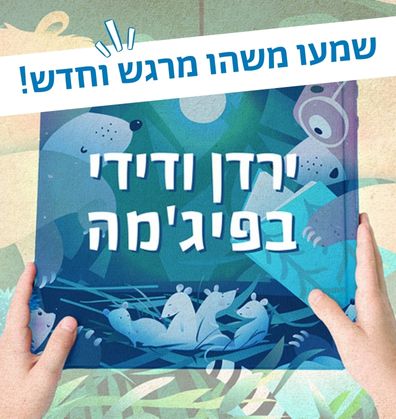סיום ופרידה
פרידות הן חלק ממעגל החיים. לפעמים הן צפויות ומסמלות סיום של תקופה, כמו במעבר מהמעון לגן, ולפעמים הן מתרחשות באופן בלתי צפוי, כמו למשל כאשר חבר קרוב עובר לגור במקום אחר. פרידות הן גם חלק טבעי משגרת החיים, למשל בפרידה מההורים בכניסה לגן או בפרידה מהיום שהיה, לקראת שינה.
סְּפָרִים
Book-Related Family Activities
Family reading advice – Finding your own way
Who says that stories must be read at bedtime? Maybe you prefer reading them in the afternoon? Or lying together on the rug, or having a stuffed toy join you while reading? Every toddler has his or her own personality and needs, and grownups, of course, have their own preferences too. You can look for the best reading time and method for you and your toddler, and create your own special story hour.
Reading with movement
While you read, you can shoo the fly away together with your toddler, just like the child in this story: You can clap, jump with your entire body, or move only your hand, or sneeze ever so loudly, and then look right and left for the fly that flew away.
QR code
Would you like to sing with the fly that got lost? Scan the code and listen to the song the “Fly That Got Lost”. You can dance, fly, and make buzzing sounds together.

The buzzing finger
Your finger can become a fly too: Make buzzing sounds and wiggle your finger in the air as if it were a fly. You can see your toddler following the “flying” finger. You can place your finger on another area of your toddler’s body each time: his or her nose, cheek, arm or ear. You can say: “Buzz on the forehead” out loud, while going over the names of their body parts and laughing together. Once your toddler has become familiar with this game, you could invite him or her to make a finger a fly too.
A tip for family reading
You can find something to like in every book: The drama, the characters, or maybe the illustrations or interesting words. After reading the book, try asking the children what they liked about the story, and share what you, the parents, enjoyed. You can even tell each other which books you especially like and why.

Friends and us
Peetz and Morchella are spending time together. She’s growing vegetables and he’s nurturing them. In the meantime, they are chatting, singing, and simply enjoying their time together. You can ask the children what they like doing with friends. What do they do together? As parents, this is a good opportunity to reminisce with your children and share your experiences and memories with childhood friends.

Vegetables and drawings
Cabbage? Kohlrabi? – Thirteen types of edible vegetables appear in the book. Can you find them all? You may want to eat your favorite vegetables or try new vegetables.
Nice to meet you: the morchella
So, who are you, Morchella? If you scan the code, you’ll learn about the morchellas that sprout up in Israel each winter. Do you want to learn more? Go to the library together or surf the internet and look for information on morchellas and other mushrooms.
Growing vegetables
You can grow vegetables, even if you don’t have a plot of land. Try taking a cut carrot top, cloves of garlic, or the bottoms of lettuce or celery, and soak them in a transparent container with water. Wait patiently, add more water if needed, and little by little, you will see leaves and roots sprout. You can cut them off and eat them, or plant them in a flowerpot, and wait for new vegetables to grow. Don’t forget to water them!
Listening to the story
Please scan the QR code to listen to the story. You may enjoy turning the pages of your book as you do.
Dramatizing the story with toys
Your children’s favorite stuffed animals and other toy animals can also be part of the story: Add or omit one each time as you act the story out together.

Playing a game of ‘Who is sleeping under the blanket?’
Ask your toddlers to close their eyes, and hide a stuffed or other toy animal under the blanket. When they open their eyes, you, parents, can give them hints as to the identity of the hidden animal, until your toddlers guess what it is. Does it bark? Does it hop around and eat carrots? You could also switch roles, letting your toddlers give you, parents, hints about who is hiding there, underneath the blanket.
Proposed Family Activities:
- What is a yak? Have you ever seen a badger? One Last Story is filled with various different animals. You may want to look at the illustrations and get to know new ones. Perhaps you would enjoy taking this book with you on a visit to the zoo or safari, so you could look for all the animals that appear in it while you are there.
- Does your family have fixed actions that accompany the transition from daytime to bedtime, such as brushing teeth, a bedtime story, prayer or lullaby? Do you like to read Sifriyat Pajama books at bedtime? If you like, you could start a new family habit or ritual that will help your child fall asleep easily and happily.
- How about playing “guess who?”: Take turns picking one of the animals in the book, moving like it and making the sounds it produces. Can the rest of your family guess which animal you are?
- What’s your story? You may enjoy making a story up together, based on real facts or entirely fictitious. You could make some illustrations to go along with it, and create a book out of it.
One Last Story is the last book you will be getting from PJ Library this year. We wish you many hours of fun reading books and telling stories, whether at bedtime, Shabbat afternoon, on vacation, or whenever you feel like it!
Proposed Family Activities:
- You may want to suggest that your child leaf through the book. What is Oren holding upon returning from his walk with his father? Which toys did the children bring the turtle? You could also look for Oren in the illustrations throughout the book. In which of them does he seem happy, and in which does he look sad? Can you explain why?
- Perhaps you would enjoy taking a short walk near your home. You could take turns looking up, down, to your right, and to your left, and announcing what you see. For instance: “I see an ant!”, or “I see a pinecone!”. Do you notice the same things?
- Does your child know what every animal likes to eat? And where it lives? You may want to discuss the right way to treat animals with your child. Together, you can think which animals can be suitable pets, and how to care for them. Even small children can take part in caring for a household pet.
- You may want to make a turtle shell using a pinecone, a disposable plate, or a finished toilet paper roll. Attach four legs and a head made of cardboard to it, paint it, and have fun owning a pet turtle! You can also use it to act this story out.
- At the end of the book, Oren wishes for his mother to find the turtle again. Together, you could write a sequel to this story. What do you think happened? Where did the turtle go? Did Oren run into it again while taking a walk in the woods? Do you think the turtle remembered him? Did they become friends?
Mira Meir 1932–2016
Mira Meir was born in Lodz, Poland, and relocated to Tel Aviv at the age of 5 along with her family. After completing her military service, she moved to Kibbutz Nahshon. Meir was an author and poet who wrote for both adults and children, and engaged in editing and translating as well. She won many awards for her literary work, including the Zeev Prize for Lifelong Achievement, the Minister of Culture Award, and the Hebrew Authors’ Prize. Among her well-loved children’s prose and poetry books are: Shluly [Puddley]; Maʹaseh She-Haya Kah Haya [Once Upon a Time]; and Paʹam Haya Yeled Shelo Ratzah Lishon Levado [The Boy Who Wouldn’t Sleep Alone].
Ora Ayal 1946–2011
Ora Ayal wrote and illustrated more than 70 children’s books. She illustrated many books written by top Israeli children’s authors, such as Miriam Roth (Tale of Five Balloons [Maʹase Ba-Chamisha Balonim], Hot Corn [Tiras Ham], and Yael’s House [HaBayit Shel Yael]), David Grossman (the book series on Itamar), and Ronit Haham (Five Witches Went for a Walk [Hamesh Mekhashefot Halkhu Letayel]). Among the books Ora Ayal both wrote and illustrated are: One Tuesday Morning [Boker Bahir Ehad]; Ugbu; and The Great War [HaMilhama HaAdira]. Her well-loved books have been a source of delight for Israeli children, and she has won many awards, among them the Andersen Children’s Literature Award, and the Ben-Yitzhak Award.
Activities You Can Do at Home
- Amy and Louis became friends because they were neighbors who enjoyed the same things, so when Amy moves far away, she’s faced with a big challenge. Talk with your children about how you manage to keep in touch with faraway friends and family. After you finish reading this story, your children might get in touch with people they miss: they could write or draw a letter to send them, or talk to them via phone or the Internet.
- Amy and Louie don’t merely miss each other; they recall the things they used to do together. You might talk with your children about things we can do to help keep memories alive. If you have photos, letters, or other items that remind you of friends and shared experiences from your past, you could share them with your children.
- Children are introduced to this book near the end of their kindergarten year. You could talk with your children about good-byes, transitions, and new beginnings. Maybe talk about the friends they’ve made in kindergarten and the things your children like to do with them. Your children could also draw pictures or write letters to give to a friend, teacher, or other staff member at the kindergarten, as a memento.
- Have you ever traveled to a foreign country, “half a world away?” Do you, like Amy and Louis, have friends who live in a faraway land? Using a globe or an atlas, you could show your children the countries you’ve visited or the places where your friends and family live. You could also explain time differences, intercontinental travel, and much more. “Amy and Louis” is the final book in PJ Library’s list for the year. We hope you have enjoyed these books and send you our best wishes for a successful summer and transition to kindergarten and beyond. Please keep in touch!
Family Activities:
“A time to embrace, and a time to refrain from embracing” (Ecclesiastes, 3:5)
- Perhaps you would enjoy looking at the illustrations together and finding examples of the help Mole had given to the baby bird. When did Mole’s care meet the baby bird’s needs, and when did it not? What changed with the baby bird, requiring a subsequent change in care, and why was it so difficult for Mole to let it go?
- Young children develop their sense of independence but still need our protection as parents. As it says in the Book of Ecclesiastes, at certain times and situations it is appropriate to be nearby and “embrace”, and at others, free trial and error is best. It may be interesting to ask your child which areas they felt they had become stronger and experienced growth in over the last 12 months, and whether there are any new things they would like to do on their own, and have us, as parents, allow them to do.
- This story describes a parting process. How do you say goodbye in the morning? Do you have a “hug & goodbye” ritual? You may enjoy some role-play – you can be the kindergarten child, and your child can say goodbye to you and “go to work”. After some activity in your “kindergarten”, and when your child’s “workday” is over, you can meet again… and hug!
“Greetings upon your return, lovely bird” (H.N. Bialik)
- Birds “speak” using whistles and tweets. You may enjoy stepping outside and listening to the birds. You could try mimicking different tweets, and “speaking” the language of the birds.
- The baby bird in the story stands in its cage and says nothing. If we were able to understand bird language, what would it have told us?
- You could also care for birds! To do so, make a bird-feeder. Take a large, empty bottle, and wash it well. Cut a large opening into one end of it. Hang it in the balcony or on a tree near your home, and place pieces of fruit, seeds, and breadcrumbs in it. Watch from afar as birds come and eat from it.

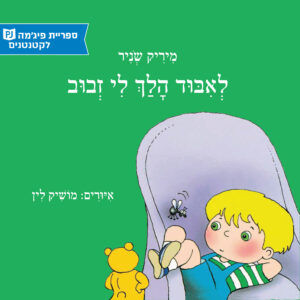 The Fly That Got Lost
The Fly That Got Lost 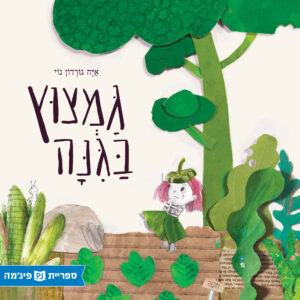 Morchella in the Garden
Morchella in the Garden 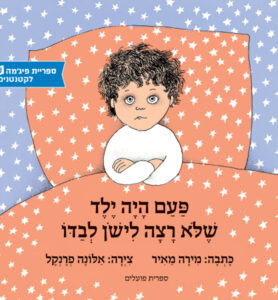 The Boy Who Wouldn’t Sleep Alone
The Boy Who Wouldn’t Sleep Alone 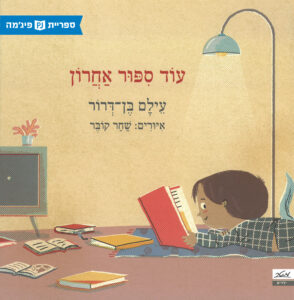 One Last Story
One Last Story 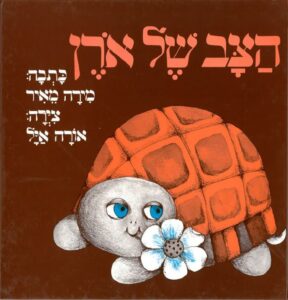 Oren’s Turtle
Oren’s Turtle 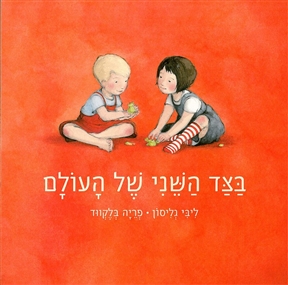 Amy and Louis Hebrew title: “Half A World Away”
Amy and Louis Hebrew title: “Half A World Away” 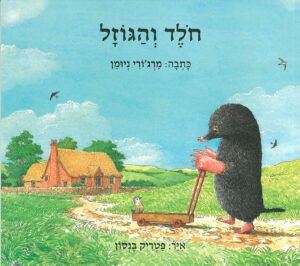 Mole and the Baby Bird
Mole and the Baby Bird 






